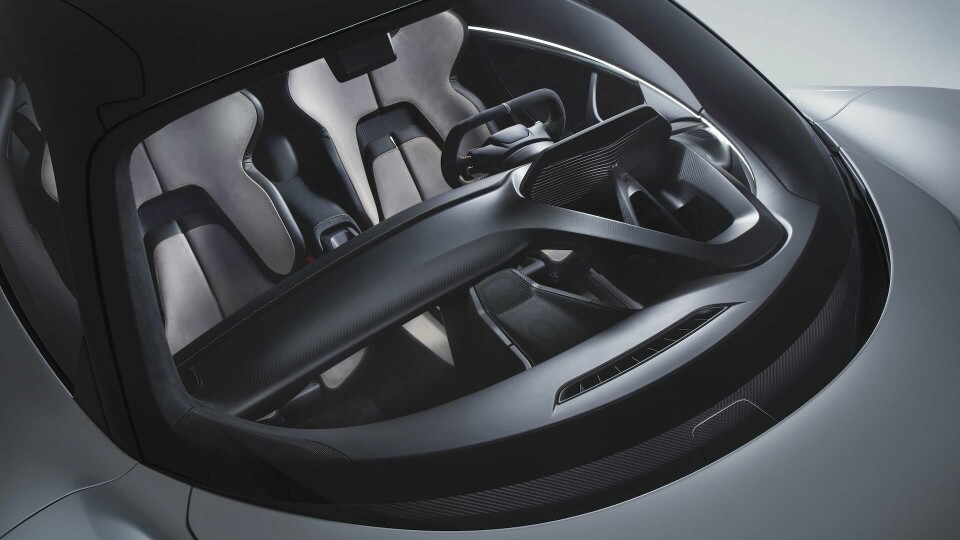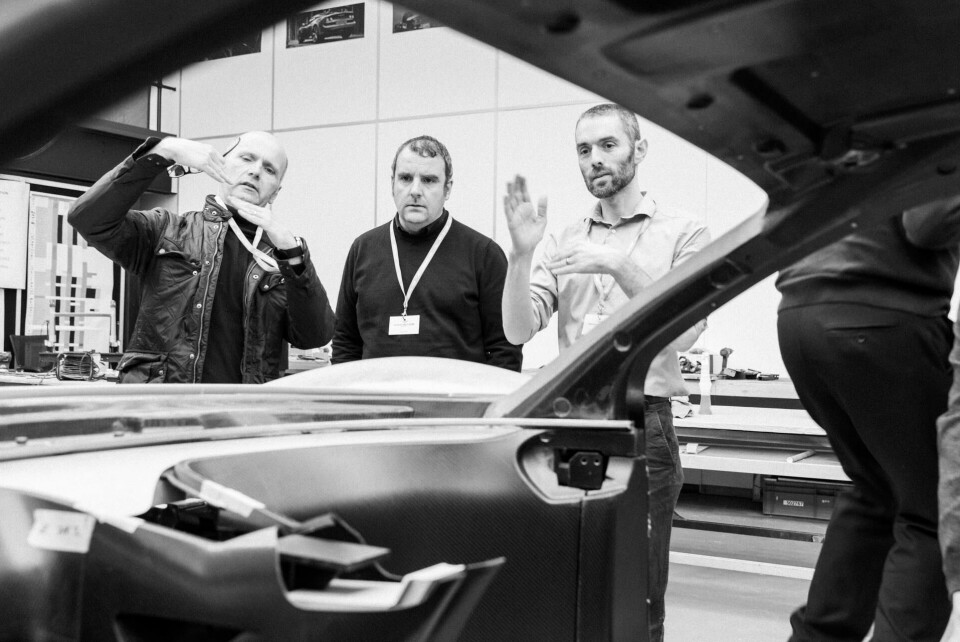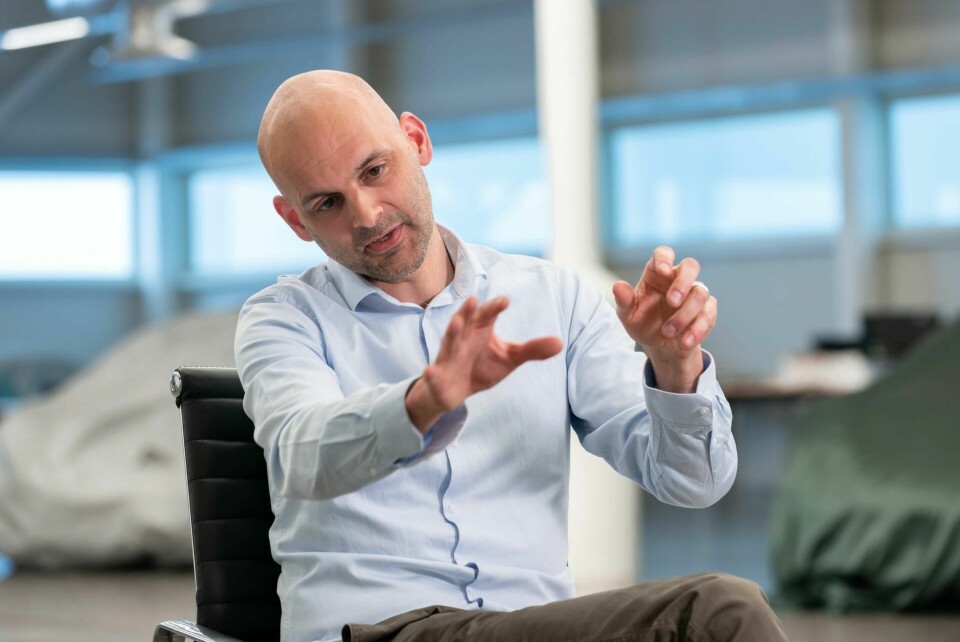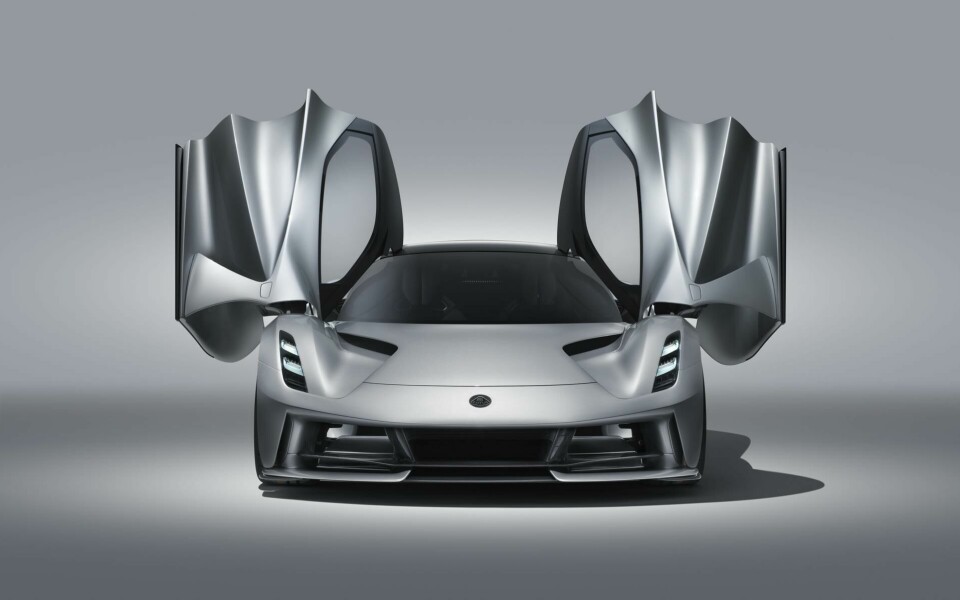
Interior Motives: Lotus Evija
“It’s not a false dawn, there’s substance. Not only in terms of our ability to engineer a product, but to actually engineer a product with new technology. It really showcases what Lotus could be, will be; and how much support we have from Geely.”
Lotus last appeared in Interior Motives in our September/October 2008 issue, which featured the Evora 2+2. That model was also the last all-new car Lotus launched. The unveiling of the Evija has therefore been a big moment for the company – especially given that this new Lotus is not just all-electric, but hypercar-fast (2000hp), expensive (£1.7m plus taxes) and exceedingly rare (only 130 will be made). Its name, by the way, is pronounced ‘E-vie-ya’, meaning ‘the first in existence’, or ‘the living one’.
The brief for such an ambitious vehicle came soon after Geely bought a controlling stake in Lotus in May 2017. “The Evija is important to illustrate capability, intent and design direction,” Lotus CEO Phil Popham explains. “It’s not a false dawn, there’s substance. Not only in terms of our ability to engineer a product, but to actually engineer a product with new technology. It really showcases what Lotus could be, will be; and how much support we have from Geely.”
Lotus Evija development renderings
The Evija, due to be delivered to its first customers in 2020, started out as the ‘Omega’ project around two years ago. Early exterior sketching started in December 2017, with interior development beginning a few months after. “There was an initial period around spring 2018, when I was kicking around various ideas,” interior team leader Barney Hatt begins. “One of the key things that influenced the interior design was the exterior, and that was well underway at that time. The kind of sculptural shapes that were emerging as a product of the aerodynamic management were looking really exciting. I was thinking, ‘how do I make sure the interior is just as exciting?’. I didn’t want there to be a sense of disappointment when you actually come to open the door.”
Classic Lotus racers were a strong source of inspiration, and Hatt made good use of his proximity to the heritage cars at Team Lotus across the road from the design studio. “When you look inside some of those classic cars, there’s something appealing about how you are so obviously seated within a structure,” he enthuses. “So on this car, with its carbon tub, I was keen that you should be very aware you’re sitting inside a carbon structure, and don’t feel there is really a barrier between exterior and interior. Also floating around in my head were our carbon bike frame designs, including the 108 and 110. They’re a nice example of pure functionality, but they’re also very beautiful as well. I think the concept of the IP emerged from a concoction of all of those things.”
Not too many different interior design directions were explored, according to Hatt, but a few early sketches reveal that a central screen was one of the initial ingredients that was later dropped. “We had a long debate about having a central screen, but the package of the car doesn’t really suit it as you sit quite close together,” says design director Russell Carr. “It’s more like an Evora and better than an Elise [in terms of space]. We’re not as extreme as some of the more extreme hypercars.”
Interior sketches
Consequently, on the final car, sat nav is handled through a single driver’s display, reinforcing again the driver-first focus. The process of working out that a touchscreen wasn’t the optimal solution also led to what is arguably the stand-out feature of the Evija’s cabin, its slim and hexagonal centre stack, as Barney Hatt continues: “Although touchscreens have many benefits, in a sports car there are drawbacks in the level of precision you need in your fingers to control the functionality of the screen. If you’re driving quickly, that’s not ideal. So we tried to sculpt the surface to promote your fingers naturally going to where the switches are.
“In the process of playing around with spherical depressions within the surface to let that happen, almost by chance I noticed that if you organise the switches in a certain way, you get a kind of hexagonal pattern emerging when you overlap the spheres; the intersections between the spheres creates hexagons. That set the whole pattern up which we repeated in a few other areas, too.”
Indeed, the foot pedals receive a similar hexagonal pattern in varying amounts of relief to help grip; this pattern is also used on the rotary controller on the centre stack, and for two more horizontally-positioned controls on the steering wheel, almost as a form of knurling.
Photos of the finished interior
The Evija’s steering wheel was another key element defined by the car’s potential high speed. Everything is clustered around the steering wheel hub, rather than in the spokes, as it might be in a regular production car. “It’s really a function of the size of the steering wheel,” Hatt says. “Given the space between the left- and right-hand grip area of the wheel, if you strike out an arc that your thumb would naturally make, you end up almost in the centre of the wheel, compared to a more conventional one with a much bigger diameter. A lot of racecar wheels are quite baffling to look at, but hopefully this sits in the middle ground. You don’t have to take your hands off the wheel to perform any operations and it’s visually coherent.”
To check if the oblong-shaped wheel would appeal to race-inspired drivers, Lotus’s director of vehicle attributes Gavan Kershaw provided input too. Hatt says that though the fundamental concept didn’t change radically, Kershaw’s feedback informed an improved steering wheel shape and button layout.
Bucks and details
Three interior bucks were made to evaluate the physical 3D design, from the first in June 2018 to the last early in 2019, and the team also met with a serious sports car collector to understand more of what makes such customers tick. “One of the interesting things was the level of detail he enjoyed finding in the products he had,” Barney Hatt explains. “The level of detail he expected from them was incredibly high. It really just reinforced the need to make sure every part of our car was beautiful and considered, and that there were no rough edges anywhere.”
The Evija certainly has some surprise and delight interior features, from metal and lighting elements that are customisable to a customer’s specific finish or hue, to a secret luggage case that deploys from the bodywork. “Every millimetre of this car is used,” says Russell Carr. “Luggage space is at a premium, so we’ve created two decent-sized, quick-release locker cases that fit behind the doors. It’s a briefcase-sized space, for clothing or another charging cable, but it’s integrated and concealed, so a bit James Bond. We had a lot of fun with our engineers, as it’s quite hard to do. In fact, it’s easier not to do it.”

Although Russell Carr clearly delights in the luxury features, it’s also clear when speaking with him and his small design team – who in most cases have stuck with Lotus through thick and thin for decades – that their feet are firmly planted on the ground. Did they ever think they weren’t quite fancy enough to pull off a £1.7m-plus hypercar design?

Barney Hatt chuckles at the question before answering, but then quickly adds with seriousness: “Despite being down to earth, we’re all passionate about what we do. So although I don’t have too many billionaire mates, and I don’t spend enough time in Monaco, I think the passion we have is obvious in the product. Hopefully that will be appreciated by the people who are equally obsessive about what they are buying.”

.























